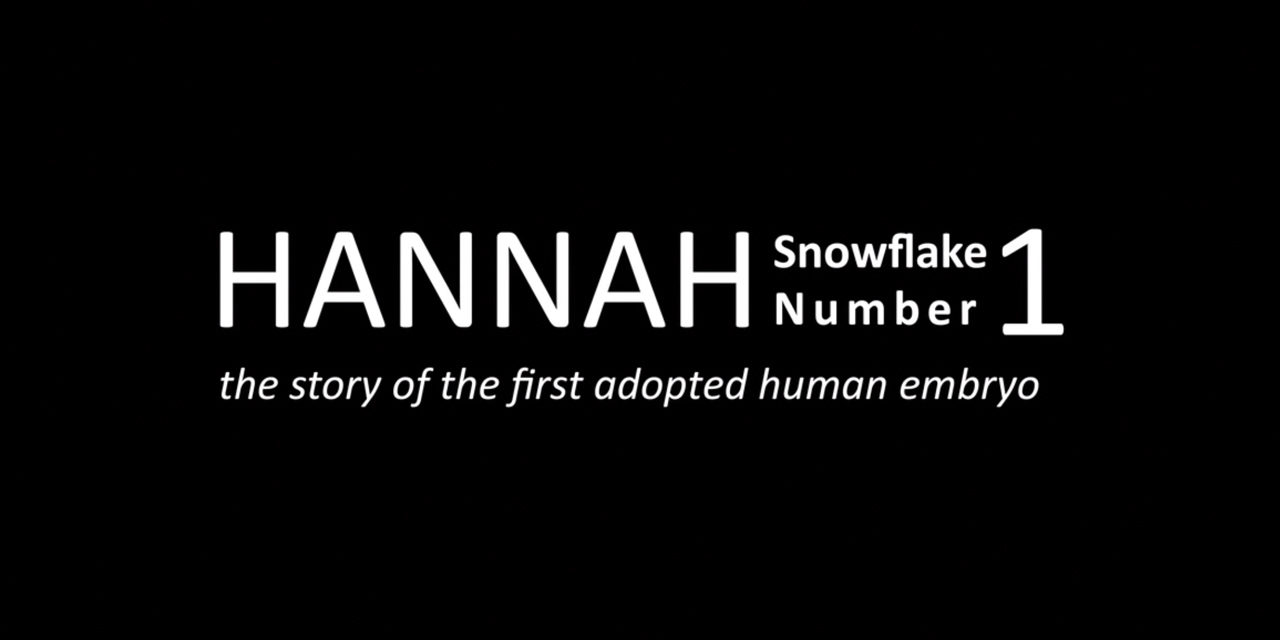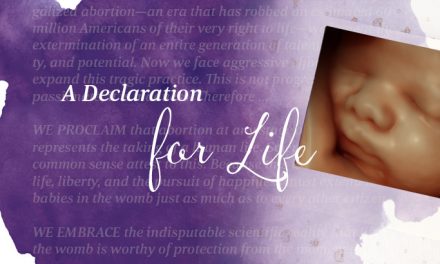In the book A Snowflake Named Hannah, John Strege tells the story of how he and his wife became the first couple in the country to adopt embryos from another family. Through this adoption the couple had their daughter, Hannah, and paved the way for other couples to complete their families.
John and Marlene Strege were a typical American couple living in California in the 1990s and had everything that they could ever want, except for a child. When the couple were told that a pregnancy would never happen, it was devastating. But it started them on an incredible journey when Marlene asked their fertility doctor a simple question, “Do you have any embryos that we could adopt?”
While couples facing fertility issues do have access to the embryos of other couples who have completed their family, these embryos are treated as “donations” and not as preborn babies. For the Streges that just wouldn’t work. Embryos are babies waiting for implantation, not property that can be donated to whoever wants one. So, the Streges set out to give Christian families another, God-honoring option, embryo adoption.
“In the fertility office, they give you the option to choose your child based on the physical characteristics of the person who provided the egg and the person who provided the sperm,” Marlene said in an interview with The Daily Citizen. “Well I said, ‘This is how you buy your car.’ We wanted to do this as an adoption because as the parents, we would have to explain this to our child or children someday and I didn’t want to tell them that they were donated to us because you don’t donate life. A birth mom wouldn’t donate her child and countries don’t donate children for adoption, there’s a process. So, we used adoption best practices.”
These best practices included a home study, adoption education courses, a physical and undergoing an extensive FBI background check. It was also an open adoption so Hannah could reach out to her biological family at some point if she wanted.
The couple also wanted to make sure that the idea to pursue embryo adoption was theologically and ethically sound, so the Streges reached out to a close pastor friend and also the founder of Focus on the Family, Dr. James Dobson.
“Whatever we did had to be honorable before God because I have to stand before Him some day and give an account of my life, and my fertility doctor will not be there standing next to me telling God what we did,” Marlene said. “When you’re going through assisted reproduction technology, at least in our case, they started out kind of easy and every time you didn’t get pregnant, they up the ante and they provide something else. And you’re just thrown these ethical questions, where do I go to find answers to this? So, with the embryo adoption that was the first question we had to have answered, ‘What would God think about this?’”
Dr. Dobson was actually unsure of the issue at first, but he quickly changed his tune when he was told that the only other option is that the embryos either stay frozen indefinitely or they would be destroyed. In fact, the Streges were connected with a placement family through Focus on the Family and were able to have their daughter, Hannah on December 31, 1998, who is now a college student and hoping to become a social worker.
“It’s definitely helped shape what I want to do career wise,” Hannah said. “I think God’s placed on my heart a desire to use my story and spread the word about embryo adoption because I have this unique history. It’s been a really great way to get to know people and get to share what embryo adoption is all about.”
Hannah has also set up an invite only Instagram page where other children born through embryo adoption can connect and share their experiences.
But this is only half of the Strege family story. In part two, The Daily Citizen will share how the Streges, and especially Hannah, became a powerful voice against embryonic stem cell research in the early 2000s, which destroys embryos.
Photo from YouTube






